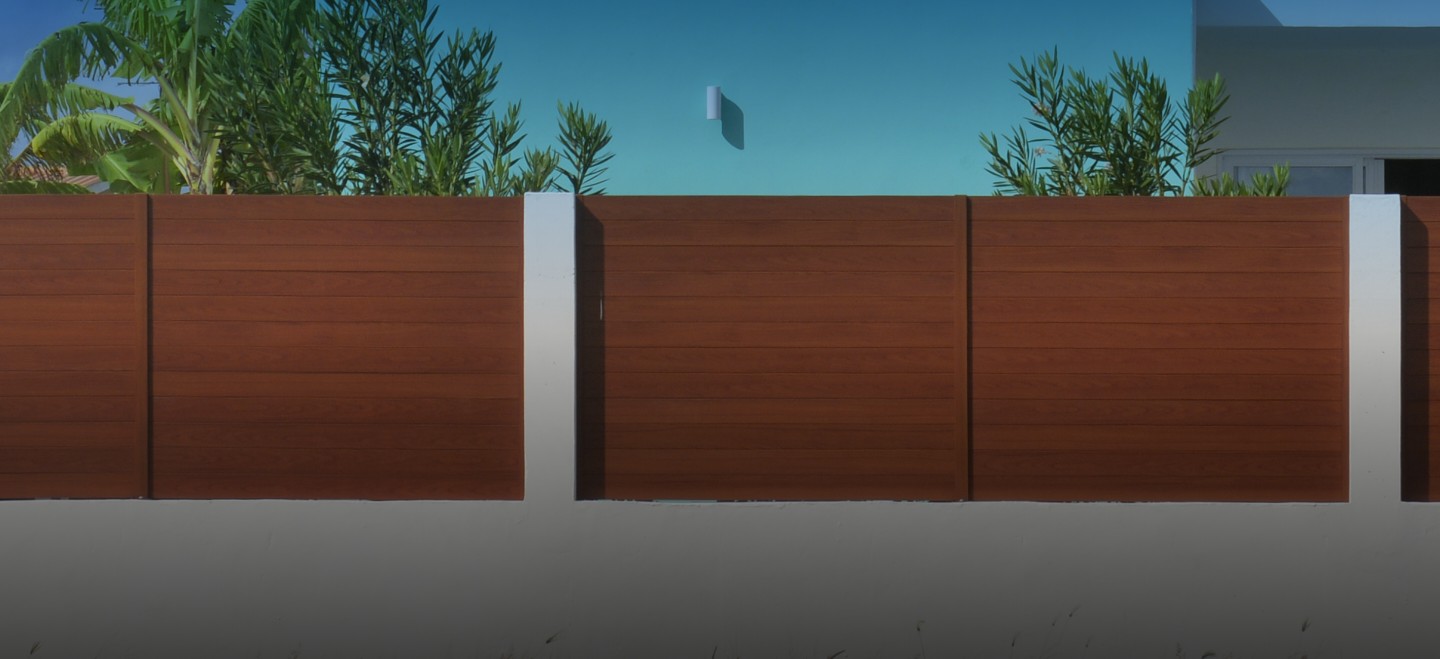All Categories
Featured
Whether it's strong winds, hefty rains, or extreme warm, weather condition can create substantial damage to your fencing, leading to pricey fixings or also a complete replacement. Below are some practical tips to protect your fencing from weather-related damages.
Plastic Fence: Vinyl is resistant and very long lasting to wetness, deteriorating, and bending. It additionally calls for little upkeep and can endure rough climate conditions without fading or breaking. Metal Fence: Wrought iron or light weight aluminum fences are solid and durable versus wind and rain. They are vulnerable to corrosion over time if not properly protected. Applying a rust-resistant finishing can help protect their look and honesty. Composite Secure Fencing: Made from a mix of wood fibers and plastic, composite fencings incorporate the best high qualities of both products. They're immune to bug, decay, and rot damages while using the appearance of natural wood. By selecting the best product, you can guarantee that your fence is much better outfitted to withstand the components.
Dampness Defense: Sealants develop a waterproof barrier, stopping rain from permeating into the timber and causing rot or mold. UV Security: Sealants and discolorations obstruct UV rays, which can dry out and tarnish the wood. Preserve Appearance: On a regular basis using a safety finish will certainly keep the fence's all-natural elegance and avoid discoloration or fading. To guarantee long-lasting defense, reapply sealer or tarnish each to 2 years, depending upon your environment and fencing wear.
![]()
![]()
Additionally, cleansing your fence can help remove dirt, mildew, and particles that can trigger lasting damage. For wood fences, carefully stress clean the surface to remove crud, while plastic fences can be cleansed with a mild cleaning agent service.
Conclusion. Your fencing is a valuable financial investment that supplies privacy, aesthetic, and safety appeal to your residential property. By taking positive actions to secure it from weather-related damage, you can guarantee its durability and keep its capability. Whether you're selecting the ideal products, applying safety finishings, or reinforcing blog posts, these easy approaches can help shield your fence from the aspects, saving you cash and prolonging the life expectancy of your fencing for years to find. Normal assessments and maintenance are vital to capturing issues early, so make certain to remain on top of your fencing's treatment throughout the periods.
- Pick Weather-Resistant Products. Among the initial steps in shielding your fencing from weather-related damage is picking the appropriate product. Some products are normally much more immune to the aspects, reducing the demand for continuous repair work. :
Plastic Fence: Vinyl is resistant and very long lasting to wetness, deteriorating, and bending. It additionally calls for little upkeep and can endure rough climate conditions without fading or breaking. Metal Fence: Wrought iron or light weight aluminum fences are solid and durable versus wind and rain. They are vulnerable to corrosion over time if not properly protected. Applying a rust-resistant finishing can help protect their look and honesty. Composite Secure Fencing: Made from a mix of wood fibers and plastic, composite fencings incorporate the best high qualities of both products. They're immune to bug, decay, and rot damages while using the appearance of natural wood. By selecting the best product, you can guarantee that your fence is much better outfitted to withstand the components.
- Protect Wooden Fences with Sealers and Spots. Wood fences are especially at risk to dampness, UV rays, and extreme temperature levels. Over time, these aspects can lead to deteriorating, bending, and fading. To secure your wood fencing from these issues, applying a high-grade wood sealer or tarnish is important. Here's how this assists:
Dampness Defense: Sealants develop a waterproof barrier, stopping rain from permeating into the timber and causing rot or mold. UV Security: Sealants and discolorations obstruct UV rays, which can dry out and tarnish the wood. Preserve Appearance: On a regular basis using a safety finish will certainly keep the fence's all-natural elegance and avoid discoloration or fading. To guarantee long-lasting defense, reapply sealer or tarnish each to 2 years, depending upon your environment and fencing wear.

- Reinforce the Fencing Posts. To stop this, consider reinforcing your fence messages by mounting concrete footings or making use of stronger materials for message anchors. If you live in a location with hefty winds or seasonal frost, this added security will aid shield your fencing from damages.
- Trim Surrounding Plant Life. Tree branches and creeping plants growing near or over your fencing can trigger substantial damage in rainy weather condition. Not only will this shield your fence, yet it will certainly also enhance the general look of your yard.
- Use Windbreaks. Wind is a major aspect in weather-related fencing damages. Solid gusts can weaken and even topple fences, specifically if they're high or not effectively reinforced. One method to reduce wind impact is by setting up a windbreak. This can be as easy as growing hedges or trees near your fence or setting up a mesh display. A windbreak acts as an obstacle that lowers the straight effect of wind on the fencing, avoiding damages from high winds and gusts.

- Address Drainage Issues. Poor drainage is a major factor to fence damage, particularly for wood fencings. Water that collects around the base of fencing blog posts can create them to rot over time.
- Normal Evaluations and Maintenance. Regular upkeep is important for protecting your fence from weather damages. Examine your fencing on a regular basis, particularly after severe weather condition occasions, to recognize any kind of signs of damages. Search for loose boards, leaning messages, or rust on steel parts. Capturing tiny troubles early can avoid them from turning right into bigger, a lot more pricey repair work.
Additionally, cleansing your fence can help remove dirt, mildew, and particles that can trigger lasting damage. For wood fences, carefully stress clean the surface to remove crud, while plastic fences can be cleansed with a mild cleaning agent service.
- Use a Rust-Resistant Finish to Metal Fences. Steel fencings, specifically those made of iron or steel, are prone to rust when exposed to moisture and humidity. To safeguard your steel fence from corrosion, use a rust-resistant coating or paint.
Conclusion. Your fencing is a valuable financial investment that supplies privacy, aesthetic, and safety appeal to your residential property. By taking positive actions to secure it from weather-related damage, you can guarantee its durability and keep its capability. Whether you're selecting the ideal products, applying safety finishings, or reinforcing blog posts, these easy approaches can help shield your fence from the aspects, saving you cash and prolonging the life expectancy of your fencing for years to find. Normal assessments and maintenance are vital to capturing issues early, so make certain to remain on top of your fencing's treatment throughout the periods.
Latest Posts
Equipping Youth with WyHy's Economic Tools
Published Apr 18, 25
1 min read
Full Circle Strategic Marketing - Boost Marketing Strategies with Expert Solutions
Published Apr 18, 25
2 min read
Exploring the Diverse Fencing Options at Washington Fence
Published Apr 17, 25
1 min read